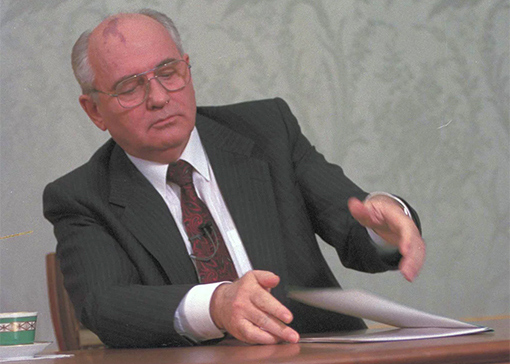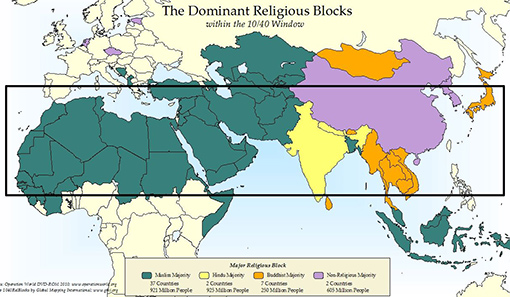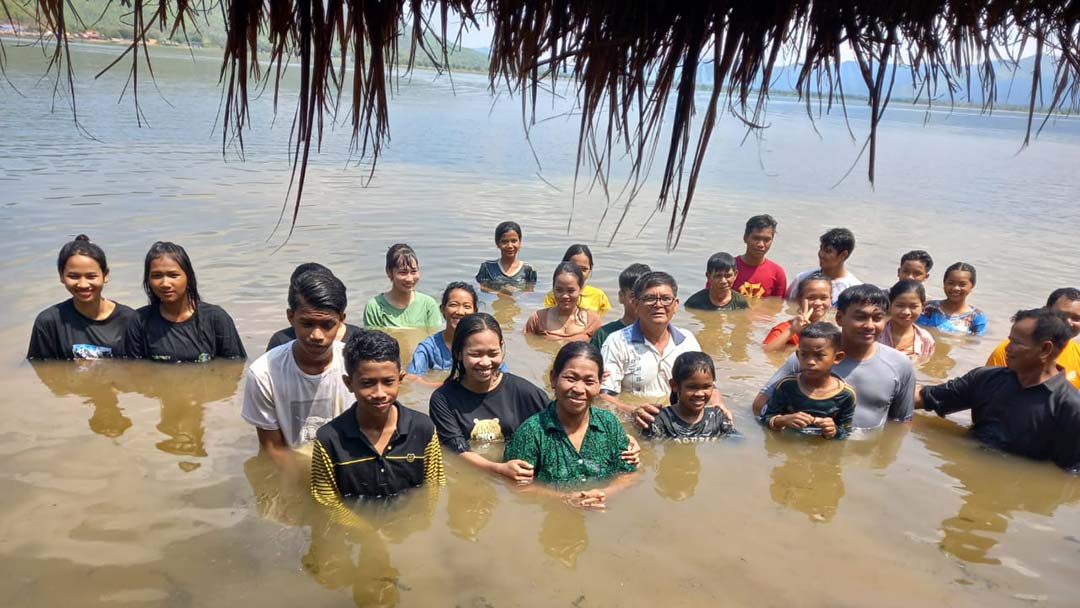As we move forward once again post Easter with the truth that “He is risen” echoing in ears, our minds, and our hearts, it’s a time also to ask the question afresh: how do we reorder our personal lives and our churches in light of the Resurrection? One sure way is to take seriously and respond intentionallyto the call of the Risen Christ to “Go and Make Disciples of all the nations (ethne)” (Matthew 28:19). [Emphasis mine.] That is the heartbeat and purpose of this and every issue of CGM Magazine: to inform and inspire to answer God’s call to the nations!
Part of that “reordering” is to transition away from a “sending benevolence” model to a “partnership model.” Why? Because one of the key means for churches to be strategically and effectively engaged in completing the Great Commission is through purposeful, ongoing partnership with a mission agency and/or a church in another part of the world, especially where the need for the Gospel is greatest because there are so few believers.
A strategic partnership is far more than having a “‘sister church” in another country—though well intentioned, this may be no more than a picture and a paragraph, a sort of spiritual pen pal marked by a pin on the map. Genuine collaborative partnership that has lasting impact on the global mission mandate given us by the Lord Jesus Christ must be about what the partner church needs at the time, not simply what we want to give. It’s about developing a long-term relationship that bears fruit and grows deep!
Here is an example. In the former Soviet Union after the fall of communism, church planting was an essential part of having a lasting impact. I first began traveling to Russia in 1992 while working part-time with another ministry, Association of International Mission Services (AIMS). I was also serving a small Lutheran congregation in Minnesota. The focus of AIMS then was not solely on evangelism, but we knew we needed to plant churches.
Two generations of communism had taken its toll. We found 400 cities with populations greater than 50,000 that had no evangelical church. We coordinated the work of various mission agencies that joined together to meet this need in cooperation with churches across the U.S., and in a few short years hundreds of churches were planted.
My role at that time was to find sponsor congregations that then partnered with an agency, a city and young Bible school graduate. The partner congregations also would send a few representatives to the evangelistic rallies we organized with our local coworkers to “jump start” the church plant, which often met in a movie theater or a local house of culture.
It was exciting for me to be in Petrozavodsk, Russia, in 2012 when New Life Church there celebrated its 20th anniversary, knowing that this was one of those churches! I was involved in about 50 of these early church plants by the grace of God! Churches in the U.S. invested benevolence funds and more in response to the partnership opportunity that blossomed so unexpectedly in the handful of years following the collapse of the Berlin Wall in 1989, and the subsequent fall of the USSR at the end of 1991. Some I know continue to relate after all these years.

Gorbachev closes his speech disbanding the USSR

Berliner Mauer – The Berlin Wall
Today partnership through our CGM member agency Friends of Madagascar Mission (FOMM) is mature and high impact, building on mission work beginning in the mid-19th century in that country, and ongoing collaboration with the Malagasy Lutheran Church. Moving beyond a mission of the month to ongoing relationship is worth it! Thanks be to God for generations of faithfulness by missionaries and supporters that continues to reap a widening harvest there!
In addition, it is also possible to partner with Lutheran congregations and agencies in the 10/40 Window, where Christians are few, churches are small, and needs are great.
The 10/40 Window

Dominant religions within the 10/40 Window
What is the 10/40 window? A term coined in 1990 by Luis Bush, a global mission leader at the time, the Joshua Project website puts it this way:
“The 10/40 Window is the rectangular area of North Africa, the Middle East and Asia approximately between 10 degrees north and 40 degrees north latitude. The 10/40 Window is often called “The Resistant Belt” and includes the majority of the world’s Muslims, Hindus, and Buddhists. The original 10/40 Window included only countries with at least 50% of their land mass within 10 and 40 degrees north latitude. The revised 10/40 Window includes several additional countries that are close to 10 or 40 degrees north latitude and have high concentrations of unreached peoples.
Approximately 5.27 billion individuals residing in 8,885 distinct people groups are in the revised 10/40 Window. 6,188 (69.6%) of these people groups are considered unreached and have a population of 3.25 billion. This means approximately 62% of the individuals in the 10/40 Window live in an unreached people group. The 10/40 Window is home to some of the largest unreached people groups in the world such as the Shaikh, Yadava, Turks, Moroccan Arabs, Pashtun, Jat and Burmese.”
Pray!

Approximately 62% of the individuals in the 10/40 Window live in an unreached people group
Through LBT, WMPL and ALWM, as well as other Lutheran agencies, you can establish a fruitful and viable partnership with churches and workers in the 10/40 Window! Here at ALWM, for example, we work directly in places like Cambodia, Vietnam, Laos, Thailand, Tanzania and Belarus, with expanding work soon into Bangladesh and Myanmar. Visits to lbt.org and wmpl.org will yield many other opportunities!

Baptism service in Cambodia
Evaluating where you are and what your congregation is doing to faithfully respond to the global great commission in light of the Resurrection is essential. Don’t settle for the status quo! Making the transition in your global mission outreach from “benevolence to partnership” is worth the time and effort, changing lives far from home as well as in your church. I trust that the April, 2023 issue of CGM mag will move you forward in answer to God’s call!
In Christ for the nations,
Bill Moberly, CGM Editor
2023 CGM Global Mission Conference “It’s Time: Understanding God’s Heart for the Nations”
Click here for details!






